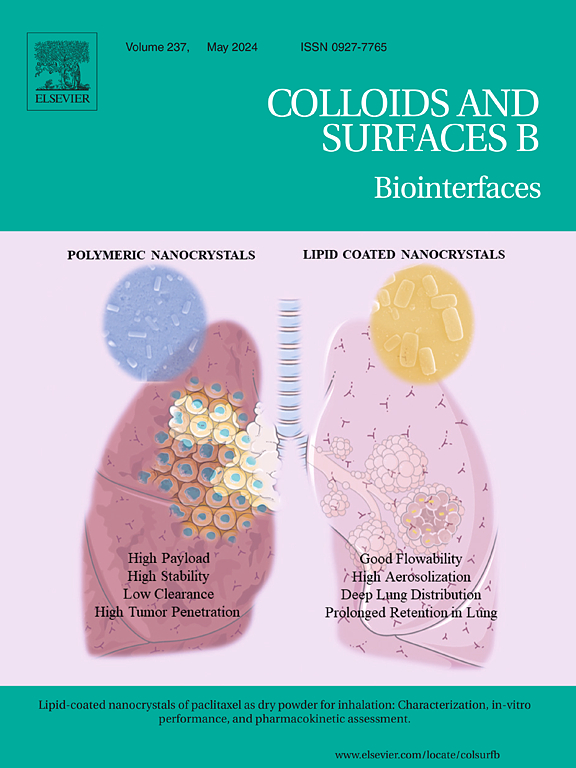Advances in the design and application of glycolysis-related nanodelivery systems for anti-tumor
IF 5.4
2区 医学
Q1 BIOPHYSICS
引用次数: 0
Abstract
Hypoxia is a common feature of solid tumors, and activation of hypoxia-inducing factors in the tumor hypoxia microenvironment can lead to complex reprogramming of glucose metabolism in tumor cells. In particular, the unique glucose metabolism pattern of tumor cells, mainly glycolysis pathway, provides conditions for tumor growth, metastasis, immune escape and drug resistance. Drug development for glycolysis-related targets is more targeted and safer than traditional chemotherapy drugs, and drug delivery systems offer favorable strategies for improving the targeted therapy of these drugs in vivo. Here, we review drug delivery systems that target tumor glycolysis, including specific small molecule inhibitors, siRNA, and other nanodelivery systems that affect glycolysis, and note the multifunctional anti-tumor nanodelivery systems that combine multiple therapeutic modalities including chemotherapy, photothermal, photodynamic, sonodynamic, chemodynamic therapies, as well as photoacoustic, magnetic resonance imaging. Several major challenges and future directions in the development and transformation of anti-tumor nanostrategies for glycolysis are discussed. The development of innovative anti-tumor nanodelivery systems related to tumor glycolysis could provide powerful weapons against tumor progression in the foreseeable future.
糖酵解相关抗肿瘤纳米递送系统的设计与应用进展
缺氧是实体肿瘤的共同特征,肿瘤缺氧微环境中缺氧诱导因子的激活可导致肿瘤细胞中糖代谢的复杂重编程。特别是肿瘤细胞独特的糖代谢模式,主要是糖酵解途径,为肿瘤生长、转移、免疫逃逸和耐药提供了条件。针对糖酵解相关靶点的药物开发比传统化疗药物更具针对性和安全性,药物传递系统为改善这些药物的体内靶向治疗提供了有利的策略。在这里,我们回顾了靶向肿瘤糖酵解的药物递送系统,包括特定的小分子抑制剂、siRNA和其他影响糖酵解的纳米递送系统,并注意到多功能抗肿瘤纳米递送系统结合了多种治疗方式,包括化疗、光热、光动力、声动力、化学动力疗法,以及光声、磁共振成像。讨论了糖酵解抗肿瘤纳米策略发展和转化的几个主要挑战和未来方向。在可预见的未来,与肿瘤糖酵解相关的创新抗肿瘤纳米递送系统的发展可以提供对抗肿瘤进展的有力武器。
本文章由计算机程序翻译,如有差异,请以英文原文为准。
求助全文
约1分钟内获得全文
求助全文
来源期刊

Colloids and Surfaces B: Biointerfaces
生物-材料科学:生物材料
CiteScore
11.10
自引率
3.40%
发文量
730
审稿时长
42 days
期刊介绍:
Colloids and Surfaces B: Biointerfaces is an international journal devoted to fundamental and applied research on colloid and interfacial phenomena in relation to systems of biological origin, having particular relevance to the medical, pharmaceutical, biotechnological, food and cosmetic fields.
Submissions that: (1) deal solely with biological phenomena and do not describe the physico-chemical or colloid-chemical background and/or mechanism of the phenomena, and (2) deal solely with colloid/interfacial phenomena and do not have appropriate biological content or relevance, are outside the scope of the journal and will not be considered for publication.
The journal publishes regular research papers, reviews, short communications and invited perspective articles, called BioInterface Perspectives. The BioInterface Perspective provide researchers the opportunity to review their own work, as well as provide insight into the work of others that inspired and influenced the author. Regular articles should have a maximum total length of 6,000 words. In addition, a (combined) maximum of 8 normal-sized figures and/or tables is allowed (so for instance 3 tables and 5 figures). For multiple-panel figures each set of two panels equates to one figure. Short communications should not exceed half of the above. It is required to give on the article cover page a short statistical summary of the article listing the total number of words and tables/figures.
 求助内容:
求助内容: 应助结果提醒方式:
应助结果提醒方式:


